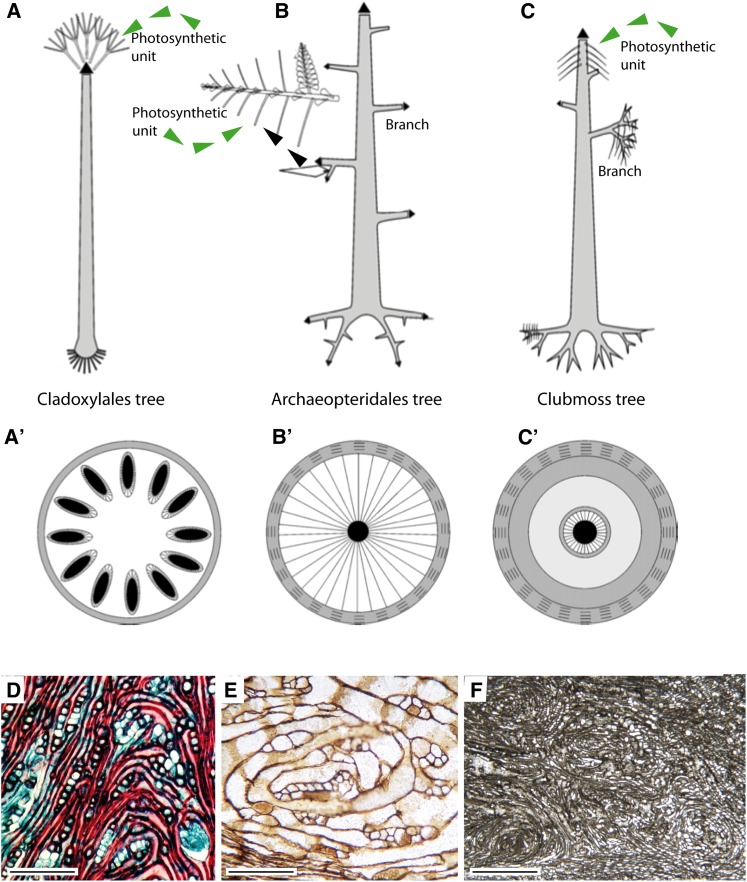Figure 4.
A to C, Comparative architecture (aerial part and rooting system) of three principal arborescent strategies of the Middle-Upper Devonian and transverse section of the corresponding trunks (Cladoxylales [A and A′], Archaeopteridales [B and B′], and arborescent clubmoss [C and C′]). The color scheme is as follows: black, primary vascular tissue; gray, cortex; and striped, secondary tissue (on white background, wood; on gray background, secondary cortex; scheme courtesy of B. Meyer-Berthaud). D to F, Tangential sections of living and fossil wood showing spiral patterns reflecting the deviation in the axial flow of auxin. D, Spiral patterns of wood distal to diverging branches in the extant Pinus halepensis (photograph courtesy of G. Rothwell). E, Circular tracheids and interspersed parenchyma from area distal to branch stele in the fossil Callixylon whiteanum (Archeopteridales) from the Upper Devonian of Oklahoma (photograph courtesy of G. Rothwell). F, Callixylon roots (species unidentified) from the Upper Devonian of Morocco. Spiral wood pattern in a longitudinal section of a main root (slide MD600/3/2-Cl2 from the collections of the Museum of Geology and Paleontology, University of Tuebingen; photograph courtesy of B. Meyer-Berthaud). Length of tissue = 1.04 mm in D and 0.27 mm in E. Scale bar = 0.7 mm.

